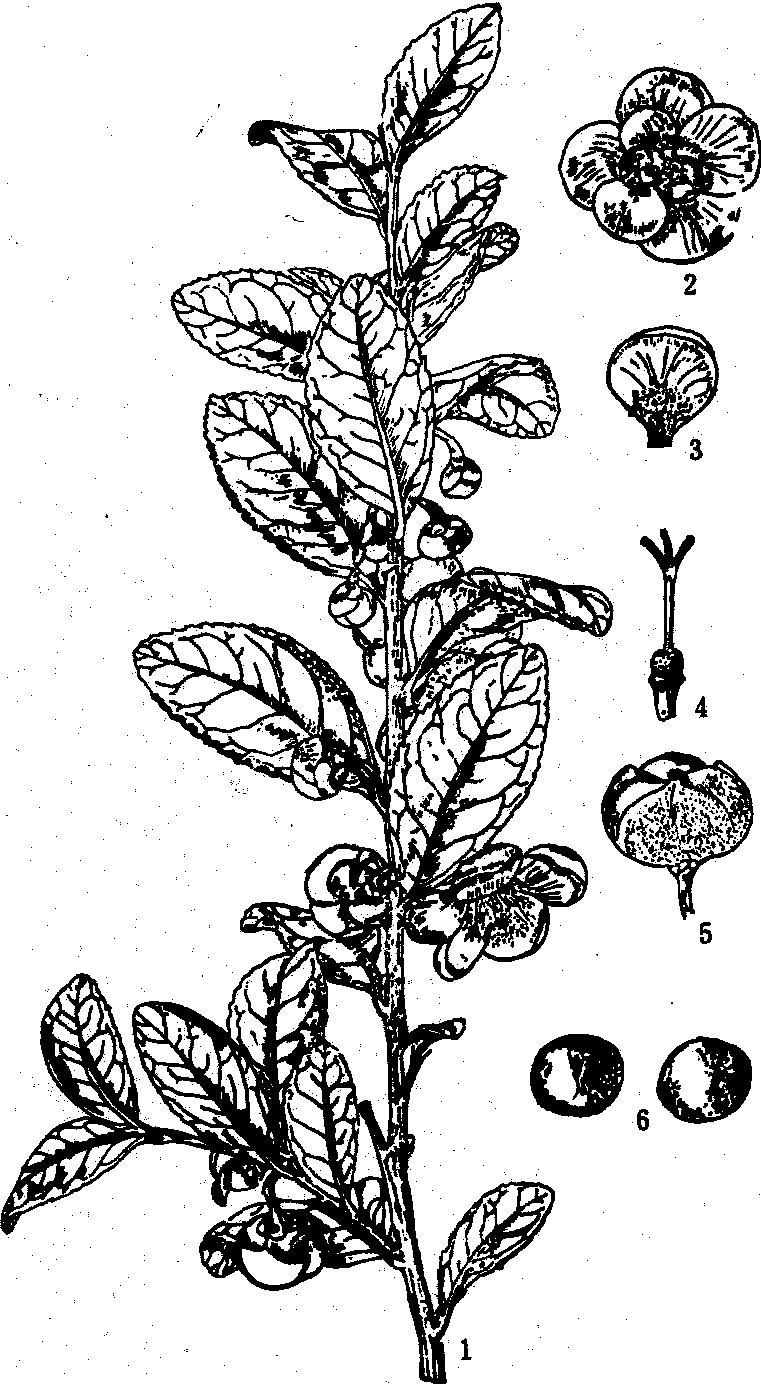山茶科Theaceae
双子叶植物,隶属山茶目(Theales)。约30属,500种,分布热带和亚热带,多喜酸性土壤。中国14属,约400种,主产长江以南各省地区。分2亚科: 山茶亚科(Theoideae),花两性,雄蕊多轮,花药背着,蒴果; 厚皮香亚科(Ternstroe-moideae),花两性或单性,雄蕊1~2轮,花药基着,浆果。
落叶或常绿,乔木或灌木。单叶互生,革质,全缘或具锯齿。无托叶。气孔器无规则型或平列型。花两性,稀单性,整齐,常单生或簇生叶腋,或近顶生。萼片5~7枚,覆瓦状排列。花瓣5枚,稀4至多数,覆瓦状排列。雄蕊多数,稀5或10枚,分离或连合成束,常与花瓣连生。花粉二细胞型,具3孔沟。子房上位,稀半下位,2~10室。中轴胎座。每室1至多数胚珠,倒生或略弯生。胚乳核型。蒴果,或核果状。种子有翅或无翅,有少量胚乳或无胚乳。染色体x=15,21。

茶 树
1. 花枝; 2. 花; 3. 花瓣和雄蕊4. 雌蕊; 5. 果实; 6. 种子
茶树(Camellia sinensis)的茶叶是世界四大饮料之一。中国是茶树原产地,在秦岭、淮河流域以南各省区广泛栽培,已有2000余年的栽培历史。茶叶是中国传统出口商品。油茶(C.oleifera)为中国长江以南低山区重要的木本食用油料树种。云南山茶(C.reti-culata)花大型,常重瓣,红色艳丽,产云南,常远销国外,为世界著名花卉之一。山茶花(C.japonica)花大美观,为中国秦岭、淮河以南习见的庭园观赏树。金花茶(C.chrysantha)花金黄色,具蜡质光泽,晶莹油润,是60年代在中国广西西南部发现的新种,已列为国家一级保护植物。木荷(Schima superba)是长江以南丘陵地区的重要用材树种,材质坚韧细致,供纺织、建筑、家具、胶合板及车船等用材。
山茶科tea family;Theaceae
双子叶植物。落叶或常绿乔木或灌木。单叶互生,革质,全缘或具锯齿,无托叶。花两性,稀单性,常单生或簇生叶腋,或近顶生;萼片5~7枚,覆瓦状排列;花瓣5枚,稀4至多数,覆瓦状排列;雄蕊多数,稀5或10枚,分离或连合成束,常与花瓣连生;花粉具3孔沟;子房上位,稀半下位,2~10室,每室胚珠1至多数。蒴果,或核果状。种子有或无翅。染色体x=15,21。该科约30属,500种,分布热带和亚热带,多喜酸性土壤。中国14属,约400种,主产长江以南各省。茶树的茶叶为世界四大饮料之一,原产中国,广泛栽培于秦岭、淮河流域以南各省区,是中国传统出口商品。油茶是木本食用油料树种。作花卉观赏的有云南山茶、山茶花及金花茶。用材树种有木荷。
山茶科
双子叶植物。常绿或半常绿,乔木或灌木。叶革质、互生,全缘或有锯齿。花两性,稀单性,单生或簇生。花瓣5至多数。花色白、粉、红、黄或间色。蒴果、核果,种子球形。世界36属700余种,广布热带、亚热带地区,亚洲亚热带地区分布最集中。中国产山茶属、石笔木属、木荷属、大头茶属、圆籽荷属、紫茎属、厚皮香属、茶梨属、杨桐属、红淡比属、柃属等15属500余种。许多是高大园林观赏用材树种,花供观赏。茶籽作食用及工业用油。